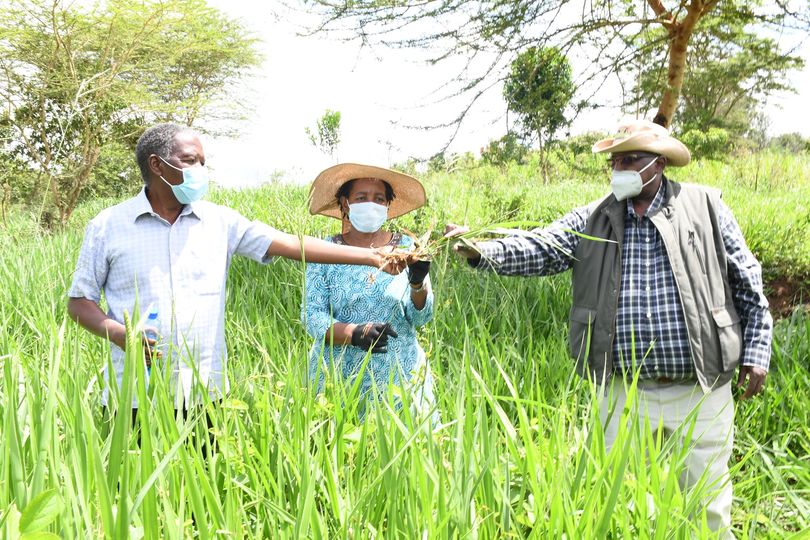
By George Munene
The Kenya Agricultural and Livestock Research Organization, KALRO, has registered four Brachiaria grass varieties for commercialization. According to Dr. Eliud Kireger, Director-General KALRO, the grasses have shown the potential of significantly contributing to increased livestock productivity, with farmers reporting 15 to 40 per cent more milk compared to local feeds.
These grasses have the potential to revolutionize the livestock industry by improving the availability of low-cost high-quality feed, explained Krieger in Kangundo, Machakos, during the announcement on Tuesday.
These registered cultivars, Toledo, Piata, MG-4 and Basiliskas also offer more disease resistance compared to the more commonly grown Napier grass. This has helped improve farmers’ income and livelihoods.
Related News: Brachiaria grass rescues farmer's cow from drought
Related News: Brachiaria termed better than Napier in push-pull technology
“KALRO has been scaling up Brachiaria or Urochloa grass production especially targeted at dairy farmers with 60,000-80,000 smallholder farmers having benefited from the grass,” said Kireger.
This is a major milestone for KALRO’s research program given the challenges of diseases in Napier grass with Brachiaria offering an excellent alternative for dairy entrepreneurs.
Brachiaria grass has over 15 per cent crude proteins and other minerals, which are necessary in milk production. Most Napier grass varieties have between 7 and 8.5 per cent crude protein.
Related News: 1Acre Nyasi program—giving livestock farmers tools to repel drought
According to Feedpedia, an animal feed resource repository, the grass does well in regions with rainfall of between 1500mm and 3500mm per annum. But it can withstand drought for between three and six months, within which it remains green, unlike other tropical grasses.
It also grows in nutrient-deficient soils, though their nutritive content is reduced. It requires a PH of between 4 and 8.
KALRO: +254 722206986/722206988
















Comments powered by CComment